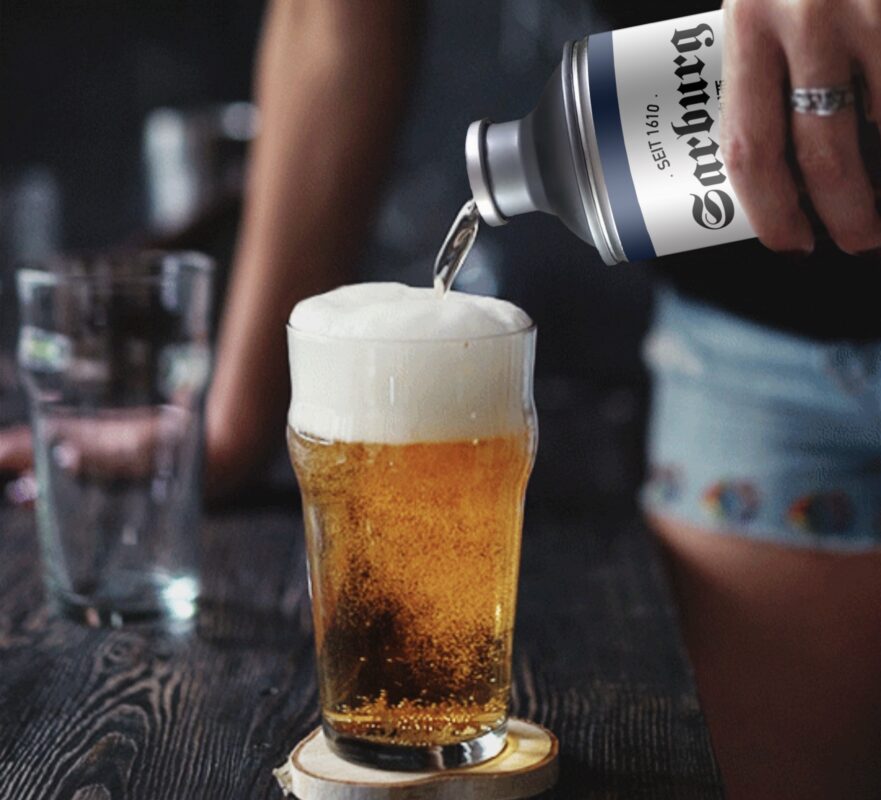As a professional brewing equipment manufacturer, research and exploration of global market investment is essential. From the original Sumerian beer to today’s craft beer, beer has become the world’s most popular alcoholic beverage. With the continuous improvement and innovation of raw materials, brewing process, stability, properties and flavors, the consumer market has also evolved into an imaginative competition around “End Demand”.
In the beer market, demand changes play a key role in future industry dynamics. We have learned from our conversations with past partners that there is growing investor interest in studying consumer behavior from a marketing perspective, especially in craft and premium beer. Craft brewery’s regional end-consumption research is mainly reflected in the age, gender and lifestyle of consumers. Among other personal factors, beer engagement, brand familiarity, and frequency of consumption plays an important role. Furthermore, Spending power and occasion are relevant segmentation variables. Research on consumer behavior is a key factor in the competitive differentiation of beer companies. We will focus on one topic–consumer psychology, in order to help investors and partners better manage breweries.

Characteristics of the Beer Market
The beer market is known to be “the world’s largest selling alcoholic beverage”. Beer is the most consumed alcoholic beverage compared to wine, spirits and other alcoholic beverages. Looking back to 2007, Global beer consumption is worth around 112 billion euros. The beer industry used to be dominated by local breweries, but over the last century it has become international and has grown from a domestic market to a global market industry. The process of internationalization has continued to the present, and the concentration of the beer market, i.e. “the extent to which a few companies provide a major part of the industry’s total output”, is greatly affected by mergers or shake-ups between specific beer companies, ultimately, the microbrewery is out.
The beer market can often be described as an oligopolistic market, as a few dominant companies hold large market shares and create huge barriers to entry. Therefore, one may doubt the nature of the beer market in terms of competitiveness. Production is concentrated in the hands of a few large breweries, and horizontal mergers result in a highly concentrated market. Also, when companies acquire suppliers and retailers, a fairly high level of vertical integration occurs, resulting in very similar product mixes. The competition isn’t about price, it’s about advertising, promotions, style, and more. Barriers to entry are high because large breweries have built and experienced customer loyalty. Finally, beer companies tend to diversify into other industries such as dining or leisure to expand their strategic options.
Beer markets can be specified from product and geographic dimensions. The ease of substitution between products (beer brands) is determined, products in the same market are close substitutes, while products outside the market are very imperfect substitutes in the internal market, product-market substitution depends on product characteristics such as alcohol content and Type of beer (lager, premium, stout, etc). From a beer geographic perspective, the beer market is generally considered to be geographically national. Popular types of beer are relatively large worldwide.
Beer consumption is influenced by a variety of factors: consumer demand for beer is influenced by specific beer prices, alternative and supplement prices, consumer income and product characteristics. The likelihood of becoming addicted to beer also has an impact on demand. Many studies have shown that demand for beer is a good indicator of price changes and that consumer incomes have relatively little impact on demand. When demographics are considered, men tend to drink beer more than women, and 18-44 year olds are more likely to find beer popular than those 45+. Generally speaking, beer is often drunk among a group of friends or other social groups who like to drink the same style of beer. This is likely to influence individual preferences and cause peer effects. Furthermore, consumption depends not only on the individual himself, but also on the social context in which the product is consumed, especially by whom. As a result, consumers may change preferences due to human contact with friends, peers, family members or others. In terms of preferences and their potential changes, beer is an interesting example. Experience and past consumption are very important aspects here, as consumers’ psychological choices determine preferences along with others’ consumption behavior and availability. Interesting research, conducted with international students, showed that the most important reasons for changes in beer consumption habits were taste change (29%), peer influence (24%), availability (31%), price (10%) and others (6 %).

Ways to Stay Competitive in the Beer Industry
The sales share of craft beer is increasingly occupying the beer market. The market potential for craft breweries is growing, but as the number of operating breweries increases, so does the number of speciality segment breweries.
Here are some questions:
How long does it take for the competitive area to prove its worth?
How many craft breweries can the competitive area support?
How to stay competitive?
There are signs that the craft beer industry has yet to peak, while the market potential continues to grow. With the addition of new breweries and “planned breweries,” every brewery owner should consider preparing for staying competitive.
Here are 5 Ways Craft Brewers can Stay Competitive:
① High-quality Raw Materials, High-quality Beer
The main goal of any brewery is to focus on producing high quality beer. Quality beer is a key success factor. With so many beer drinkers already turning to craft beer, it’s easy for consumers to make the decision to try any style and taste of beer, which benefits the craft beer industry as a whole.
As consumers are exposed to more craft beers, breweries gain more insight into their beer choices, leading to opportunities for consumer loyalty. Of course, beer connoisseurs are also becoming more aware of quality, and the most important thing a craft brewery can do is keep producing quality beer to stay competitive. As the variety of craft beers on the market increases, low-quality craft beers will be eliminated first.
② Manage Quality – Maintain Consistency
Manage your brewery production schedule and focus on consistency. If each experience is different, consumers may discover risks associated with your beer. The risk could lead consumers to switch to competitors that can give them a similar “experience”, even if the experience isn’t that great. Consistency has always been the key to every successful business. Provide consumers with a consistent quality experience.
③ Plan Ahead
Make sure you plan ahead and keep up with demand. Gaining consumer loyalty can be a long process, but it only takes one single bad experience or one missed opportunity to break that trust. If your loyal consumers don’t have access to their favorite beer, they’ll accept alternatives, resulting in your loss and others’ gain.
Although consumers prefer to try new beers, which provides an opportunity for new product launches, meanwhile it can be a disadvantage if you can’t keep up with demand. Breweries can prevent missed opportunities by ensuring that their main beers are readily available in their most loyal markets. Consumers are inherently loyal, but that doesn’t mean they’ll be forever loyal to your beer.
④ Sell Better and Smarter
Whether you have a person in charge of sales or a sales team that handles orders, consumers want to know what’s going on in a brewery. In the mobile age, the ability to get real-time orders from a tablet or mobile device is now a huge benefit–the ability to view a customer’s order history, view reports, inventory, invoices and delivery notes, and more, allows salespeople to keep track of customer service outperform competitors. By tracking and managing sales opportunities, forecasting drives raw material demand planning and future production planning is smarter planning when finding new customers. Being able to do this, seamlessly integrated into the production floor, means the distillery will be constantly amazed.
⑤ Manage Your Growth
Finally, you should effectively manage the growth of your brewery. The most common reason the first four points are compromised is the inability to manage growth. As craft breweries grow, it becomes increasingly difficult to produce consistent, high-quality, differentiated beers that meet demand. Managing growth and the complexity that comes with it can ensure consumer retention and help your brewery stay competitive. Managing growth is not easy and requires operational expertise and systematic procedures. If this is done by individuals or patchwork systems, your competitive advantage may be at risk.
To achieve these goals, you’re going to need some help; Spreadsheets and bookkeeping software can’t provide that kind of help in the long run. Achieving these goals is not easy or guarantees your success, but they will provide a strong edge over the competition and help you stay ahead. You need a powerful brewery management solution that will provide everything you need to manage every aspect of your brewery. You need a brewery software/hardware solution that streamlines processes, eliminates inefficiencies and focuses only on what you do best: brewing great beer.
No matter the size of your craft brewery, hgmc brewery solutions will help your company streamline processes for maximum growth and efficiency. Building your brewery with multiple systems often causes problems. Building on the right foundation is critical to Managing scalable future growth.

